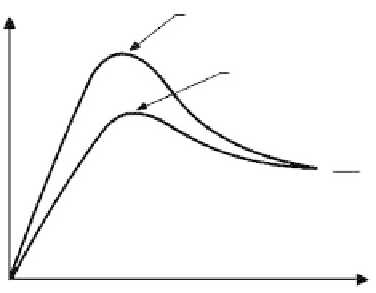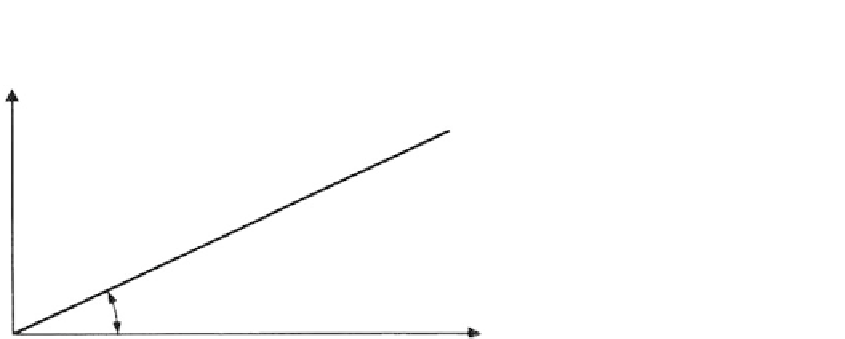Environmental Engineering Reference
In-Depth Information
Direction of loading:
Soil anisotropy may cause shear strength measured in a horizontal
direction to be significantly higher than when measured in a vertical direction (see
In Situ
Vane Shear Test, in
Section 3.4.4)
.
Residual or Ultimate Shear Strength s
r
, or
φ
r
Concepts
The lowest strength that a cohesive material can attain in the confined state is termed the
ultimate strength. In many cohesive materials, if strain continues past the peak strength
under continued stress, the strength will decrease until some minimum value is reached.
Thereafter, strength remains constant with increasing strain as shown in Figure 3.30.
Residual strength
is a strength lower than peak strength remaining after failure has
occurred. It has become generally accepted that the residual strength is the lowest strength
that can be obtained during shear. In a normally consolidated clay the
remolded
undrained
shear strength is considered to be equal to the ultimate or residual strength
s
r
.
The envelope for the ultimate drained strength passes through the origin as a straight line
on the Mohr diagram and has no cohesion intercept (even in cohesive materials) as shown in
Figure 3.31 (Lambe and Whitman, 1969). The drained ultimate shear strength is expressed as
s
σ
n
tan
φ
r
(3.33)
Other Factors
Natural slopes:
The residual strength, rather than the peak strength, often applies, as dis-
cussed in
Section 9.3.2.
An approximate relationship between
φ
r
and plasticity index for
rock gouge materials is given in
Figure 3.32.
Peak strength
−
overconsolidated clay
Peak strength
−
normally
consolidated clay
Ultimate strength
FIGURE 3.30
Peak and ultimate strength vs. displacement.
Displacement
τ
FIGURE 3.31
Mohr's envelope for ultimate drained
strength in clay.
r
σ




